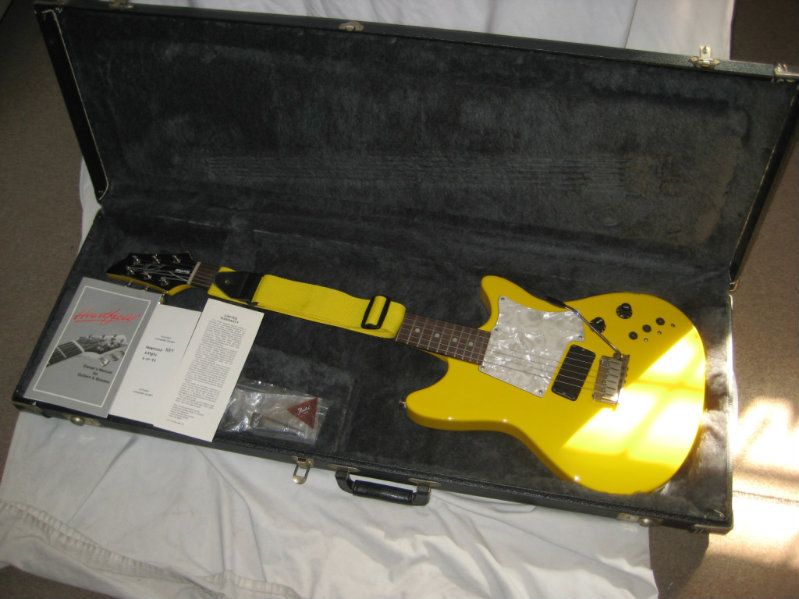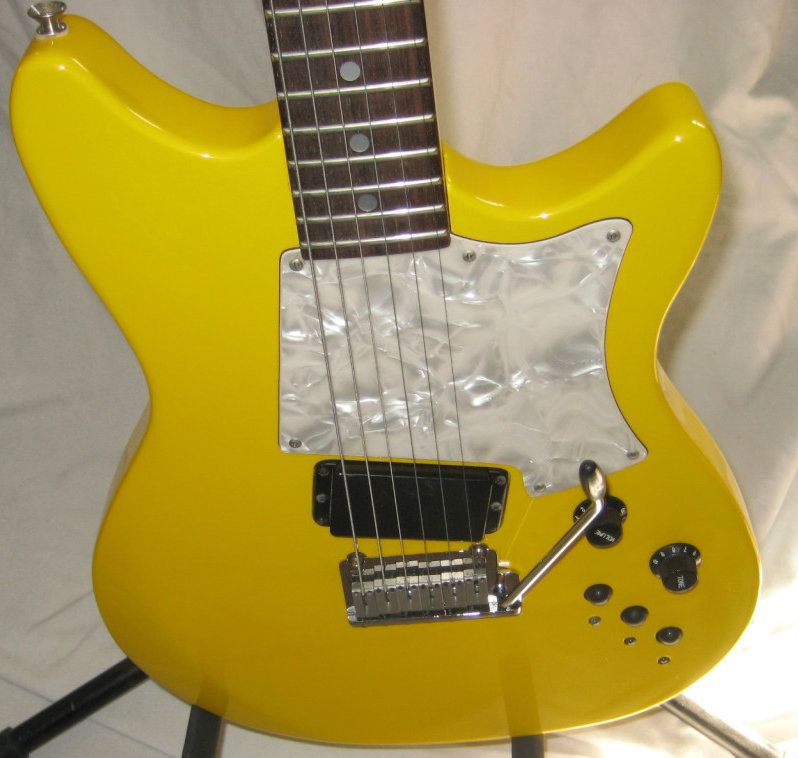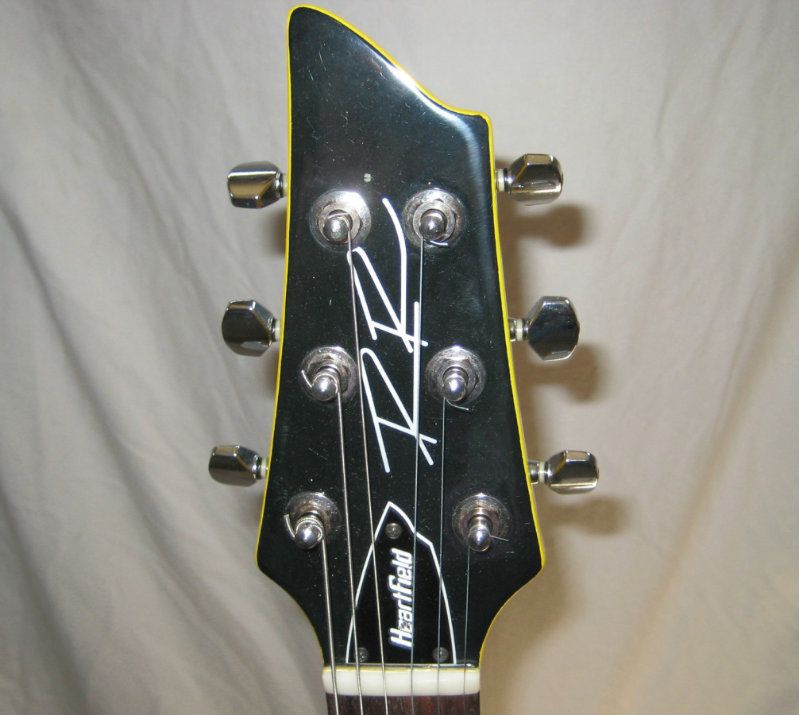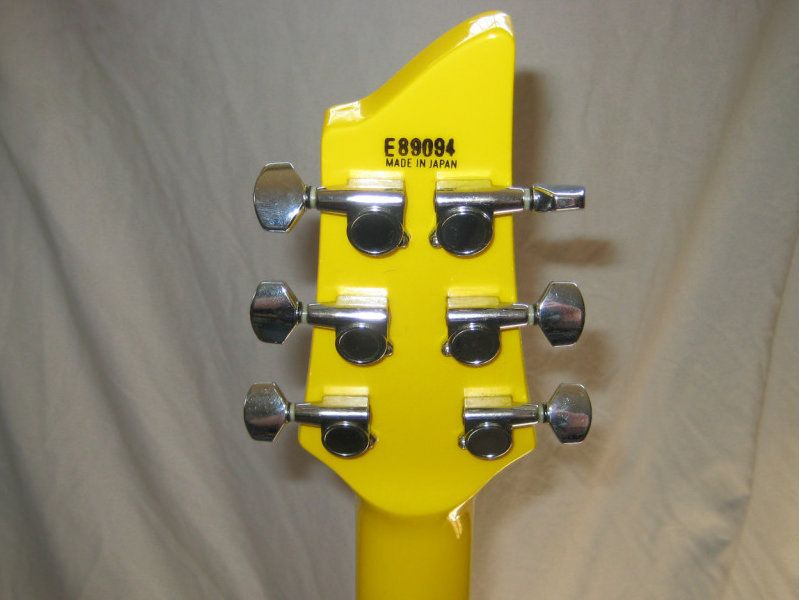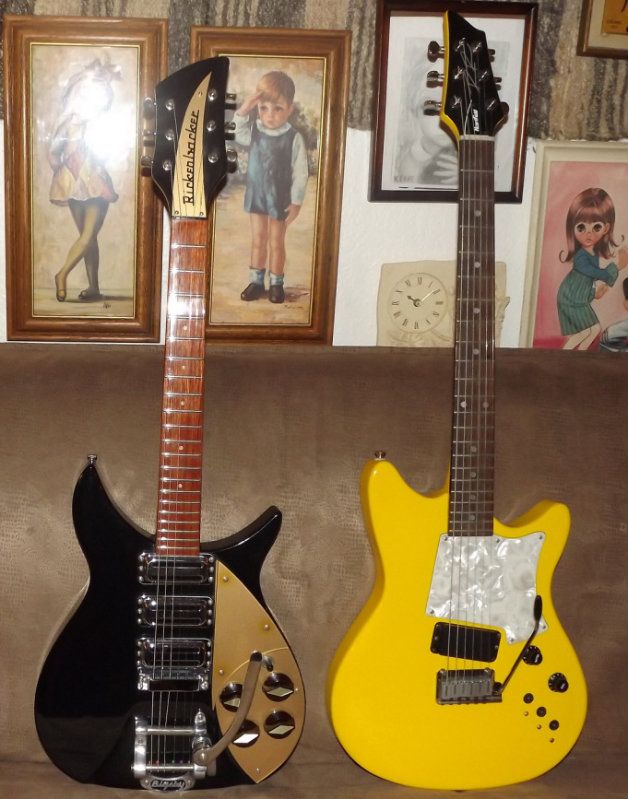Thanks! Here is some info I copied from the
Heartfield Central website:
"The Who, What, and Why of Heartfield
Originally the Heartfield line was setup up to be a testing ground for Fujigen’s R&D department - allowing their young design team the opportunity to test new design concepts that otherwise may not be given a chance due to marketing restrictions of their OEM customers. Because this was their original intent and there was not great pressure to generate sales, much of what was developed was without outside evaluation. They simply wanted to make guitars and basses that they felt were on the cutting edge - instruments incorporating ideas that might later prove to be valuable additions to the products that they were making for their OEM customers.
Two and a half years ago Fender was faced with two problems. With the weakening of the dollar the cost of imported product was escalating - the demand for American made was increasing beyond our capacity to produce and the desire for what was now mid to high priced Japanese product was rapidly decreasing - making it difficult to support Fujigen as supplier. Secondly, there was a segment of the market (approximately 25-30%) that was not being addressed by Fender style product. All our previous attempts to penetrate it under the Fender banner had been in vain. One fact was consistent to both of these problems - the Fender name. Consumers felt that since Fender was an American company and an American manufacturer that, above a certain price point, the product should be made in the U.S.. And it wasn’t just a question that only product made in the U.S. would sell in the mid to high price ranges - other totally Japanese companies, such as Ibanez, were doing quite well selling their products in those price points. It was a question of tradition. Which brings us directly to the cause of the second problem - why couldn’t we sell those other styles of guitars? Tradition.
In the dealers and consumers minds Fender means a particular group of instruments - Strats, Teles, Ps and Js. We could tweak them a little here and there, but heaven help us if we went to far - don’t mess with tradition. It seemed like every time we did, we had messed with mom, apple pie, baseball, the flag, etc., etc. But we weren’t prepared to give up. Our goals was, and still is, to have products, marketed by us, that are viable options regardless of what style instrument the consumer is looking for.
Because we had been unsuccessful in our attempts using the Fender name, we felt that marketing the right products using a different brand name might be the answer. Since Heartfield had just been started by Fujigen and hadn’t established a “tradition”, and since it also gave us the opportunity to support Fujigen without placing any further burdens on our own manufacturing facility, it seemed like a possible solution for both of our problems.
We realized that the product that had already been designed may not be what the market was demanding but we felt it did give us a place to start from. A product to take sound to artists and dealers - something solid to show that we were serious, something they could comment on - something they would criticize - something they could help us change - and in the end when we would come back with the new Heartfield line - something they could support because they helped to design it.
In our early meetings with Fujigen, when we were first trying to get Heartfield started, the one thing that was evident was that, unless we were willing to make a full commitment with all our resources, this project would not be successful. In the beginning, because of other restrictions, we were unable to do that. But we felt it was important to start the project anyway. Internally we began setting the groundwork for how to make the product line what we knew it has to be to be competitive. Both Fuji and Fender felt that the individual strengths of both companies joined together is what would make this project a success. Our strength was in design - their was in production. The first step was to set up a U.S. design group.
After much deliberation it was determined that the team would be made up of members of Marketing, Artists Relations, R&D, Quality Control, the Custom Shop, Fender manufacturing, and representatives from Fujigen’s R&D facility. In reality, after looking at the talent pool we had available we felt we would be foolish not to utilize all of it.
Jay Black - Over 15 years experience as a custom guitar builder, first with Roger Sadowsky in New York and for the past 2½ years with Fender; has built for such artists as the Rolling Stones, Bob Dylan and Jeff Beck.
George Blanda - Overt twenty years experience as a builder and guitar designer, came to Fender over 5 years ago as a design engineer, his design projects include the American Standard Series, the Plus Series, Eric Clapton, Yngwie Malmsteen and James Burton signature models.
Bruce Bolen - Over 30 years as a top performing and touring guitarist; 20 years with Gibson in various positions from clinician to custom manufacturing; over 4 years with Fender in marketing; sales; artist relations; and quality control.
Larry Brooks - A custom builder for over 15 years as well, Larry has built guitars for Bonnie Raitt, Albert Collins, Jon Bon Jovi, Ritchie Sambora, and most of the other artist endorsers who’ve had product built bu Fender’s custom shop.
Yasahiko Iwanade - One of Japan’s top builders and a world class guitar historian, he came to Fender almost 2 years ago to work as a master builder in our custom shop - he gives Fender a unique perspective into what is right for the Japanese market, helping us solidify as an international company.
John Page - Has been at Fender for over 10 years; currently manages both the Custom Shop and R&D; has been building guitars for over 15 years; began at Fender in the R&R department as a model maker and became a design engineer shortly after that, assisted in artist relations and has built numerous custom guitars for many of Fender’s top artists.
Jack Shelton - Has been with Fender for over 5 years, initially as a DSM and for the past 2 years had headed up Sales and Marketing; prior to that he was an independent rep for over twenty years representing among others, Sunn amplification and Kramer guitars; at one point marketed his own line of electric guitars.
Dan Smith - Responsible for Fender’s electric guitar marketing and products sources for the past 10 years; spent 5 years at Yamaha handling their Electric Guitar and amplifier marketing; owned a Guitar repair and specialty shop; started building and repairing guitars in the early sixties; worked as a professional musician for over 20 years.
Fred Stuart - Top player for over 20 years; began building and repairing guitars over 15 years ago; an authority on vintage electronics; has been a master builder in Fender’s custom shop for almost 3 years.
Nick Sugimoto - Fujigen’s representative on the team; an extremely talented designer and builder has been deeply involved in the design of all products that Fuji manufactures; strong manufacturing and engineering background.
Mark Wittenberg - Fender artist relations manager for the past 2 years; prior to this he worked at Chesbro, Ibanez’s west coast distributor for over 5 years handling their electric guitar marketing; before that he worked for various artists supplying tour support.
That’s a brief outline of each of our Design Team members - each brining their own perspective to our design challenges. But that doesn’t really complete our design team. Just as important is the input we derive from our extensive roster of artists; our dealers; our consumers; and lastly, our sales force. Utilizing all this talent has allowed us to develop one of the most exciting new product lines any guitar company ha ever introduced. But designing it isn’t quite enough - somebody has to take those designs and turn them into quality products. That brings us back to Fujigen.
Started over 30 years ago Fujigen has arguably become the world’s most advanced manufacturer of quality electric guitars and basses, and, more importantly one of the world’s finest. This is evidences equally from Fender’s highly successful affordable Standard Series to the exquisite D’Aquisto arched top models from the Master series line. The fact such strong competitors as Ibanez and Yamaha have also chosen Fujigen above all others in Japan to build their products is only a further testament to those talents and abilities. For the past ten years Fujigen has played a key role in Fender’s success. We feel strongly that Heartfield will soon represent a further addition to this very successful relationship.
Well, we’ve discussed the what and the who, but what about the why? We did touch on it briefly in the beginning when we talking about Fender’s two problems - the weakening dollar causing an increase in demand for American made products, while lessening the desire for offshore produced products, and, the fact that there were guitarists out there looking for instruments to fill needs not addressed by the traditional Fender product line (and the lack of acceptance of Fender brand product in the past that has been designed to fill that need). But these points don’t fully address all the reasons why. Briefly here’s the whys.
- We want to be a force with the right products in areas where Fender has not traditionally been a force. This is actually for two reasons - one, because we want to expand our market share, and that is difficult to do without expanding beyond the arena in which we already dominate; and, two, because we want to insulate the company from the hard times that can result if tastes change away from the company’s traditional models.
- Since we are restricted by our manufacturing capacity for American made products we need products that will allow us to expand our sales while utilizing our other product sources.
- We need products that continue to ensure that the relationship with Fujigen can be maintained. There are fewer and fewer high quality manufacturers around the world. Many other companies are knocking on Fuji’s door asking them to make instruments for them. Fuji has been a loyal supplier of quality products. We cannot risk losing them. The dollar could strengthen again, as it did in the early eighties, and the demand for product could shift away from U.S. made to wherever we can get it at the best price.
- We want to establish a brand name that would allow us to experiment and design outside Fender’s traditions - a chance to perhaps come up with the next Strat.
- A side reason is that it allows us to establish another dealer network - one that could give us a strong group of dealers to draw from if particular Fender accounts fall by the wayside.
That pretty much covers the “what, who and why”, hopefully giving you the kinds of answers you need not only for your dealers, but for your own questions as well."
